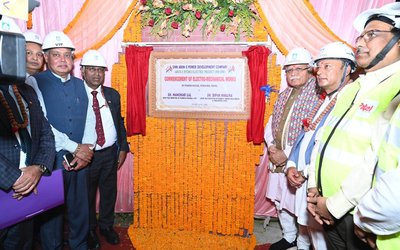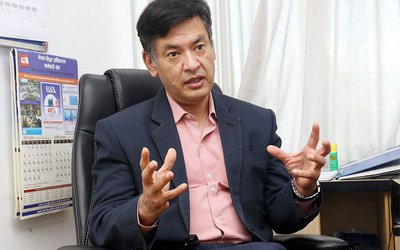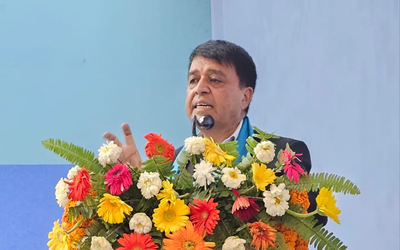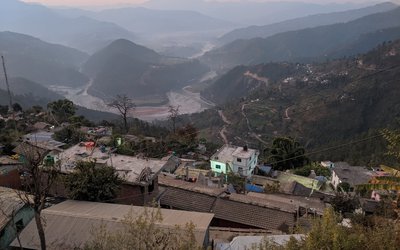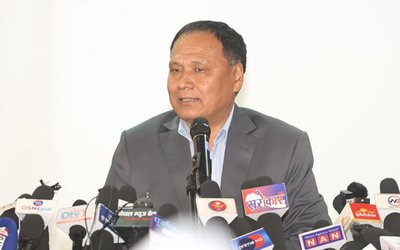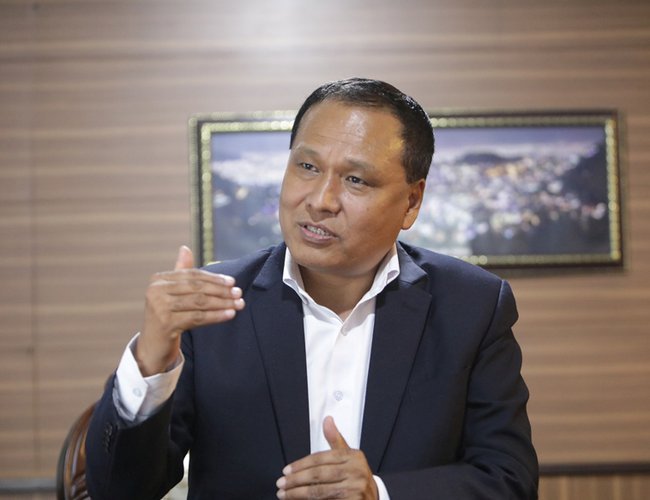
"I am pleased to announce that Nepal will be exporting close to 1000 MW of electricity to India, marking a significant achievement. Our 'Neighborhood First' policy, along with our unique cultural and interpersonal connections, is propelling our relationship forward," stated Dr. S. Jaishankar, Minister of State for External Affairs of India, during his meeting with visiting Nepalese Foreign Minister Dr. Arzu Rana Deuba.
Dr. Jaishankar remarked that the recent decision by the Government of India to permit Nepal to export an additional 251 MW of electricity to India represents a significant achievement and a favorable development for the Nepal Electricity Authority, as well as for Nepal in its efforts to mitigate the trade imbalance with India.
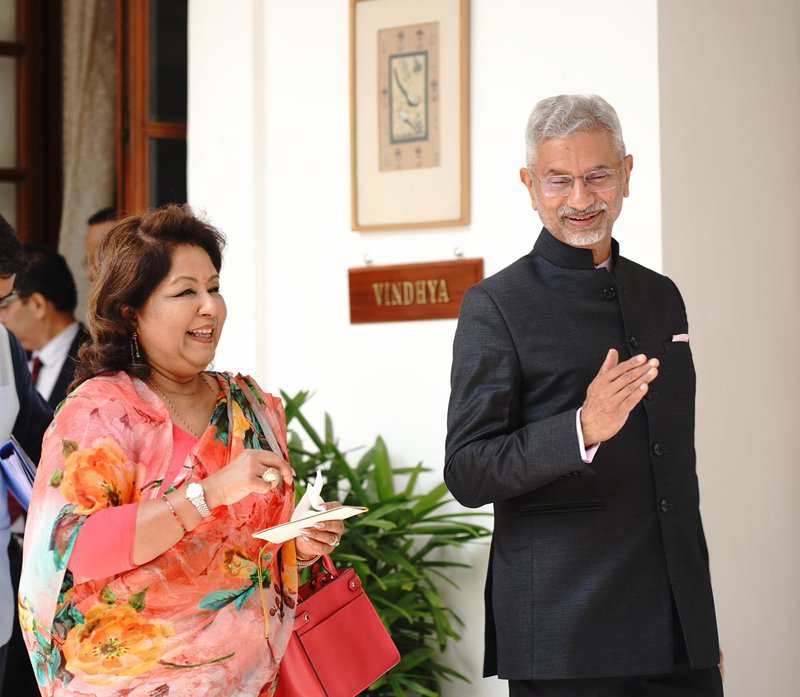
Minister of Foreign Affairs Dr. Arzu Rana Deuba expressed her gratitude on her X wall, stating, "I extend my thanks to the Government of India for granting additional approval for the export of 251 MW of power from 12 hydropower projects in Nepal to India during the wet season on a medium-term basis.
“With this addition, I am pleased to note that the Government of India has now approved a total hydropower export capacity of 941 MW from Nepal to India. I am optimistic that the collaboration in the power sector between our two nations will continue to flourish in the future." Additionally, Dipak Khadka from the Ministry of Power, Water Resources, and Irrigation shared his positive sentiments regarding the Government of India's decision on LinkedIn.
Minister Khadka expresses his heartfelt gratitude to the Ministry of Power, Government of India, for the recent approval of an additional export of 251 MW of electricity. This allocation includes 125 MW to Bihar via PTC India Limited and 126 MW through NTPC Vidyut Byapar Nigam, sourced from twelve hydropower projects in Nepal, and is set for mid-term export during the wet season months.
With this latest approval, the Government of India has now sanctioned the export of a total of 941.44 MW from 28 hydropower projects in Nepal to India. I eagerly anticipate further collaboration to enhance the partnership between Nepal and India in various sectors in the future.
For Kul Man Ghising, who assumed the role of Managing Director of the Nepal Electricity Authority (NEA) three years ago amidst the diversion of over 700 MW of power, resulting in significant financial losses, this marks a significant achievement.
This marks a significant milestone in the history of power trade between Nepal and India. "By exporting more than 1000 MW of surplus electricity, which will remain after fulfilling Nepal's total domestic demand, the Nepal Electricity Authority (NEA) stands to generate revenue exceeding Rs. 18 to 20 billion this year," stated Managing Director Ghising.
"Without India's agreement to import this surplus electricity, NEA would have faced the necessity of spilling energy, resulting in substantial revenue losses." The primary challenge during his second term was to identify a market for surplus power during the rainy season, thereby minimizing revenue losses and ensuring sufficient funds for imports in winter.
With the backing of then Prime Minister Sher Bahadur Deuba, who addressed these issues at a political level during a bilateral meeting, the Ministry of Energy, Water Resources and Irrigation, along with NEA, laid the groundwork for the export initiative. As Prime Minister Deuba engaged with Indian Prime Minister Narendra Modi, who responded favorably to Nepal's appeal, the prolonged impasse in power trade was finally resolved.
The installed capacity stands at 3156 MW, with hydropower contributing 2990 MW, resulting in over 3000 MW available in the grid. Nevertheless, the average demand during peak hours in the domestic market is approximately 1800 MW.
The Nepal Electricity Authority (NEA) sells electricity at Rs.6 per unit in the domestic market, while the export rate to India is Rs.8.72 per unit. Following domestic supply, NEA possesses a surplus exceeding 1100 MW. If Nepal had not permitted exports to India, NEA would have to waste over 1100 MW daily, leading to significant financial losses.
Despite electricity coverage exceeding 90 percent and NEA's ongoing efforts to achieve universal access, domestic demand remains insufficient. As reported by NEA, 539 out of 753 local levels have achieved full electrification, while 196 have been partially electrified. The Electrification Data-2081 BS from NEA indicates that 99 percent of the total population has access to electricity services, based on an extensive study conducted at the ward level.
The economic downturn has significantly impacted the construction industry, leading to a substantial decline in electricity demand from cement and iron, which are the two primary sectors with the highest electricity consumption.
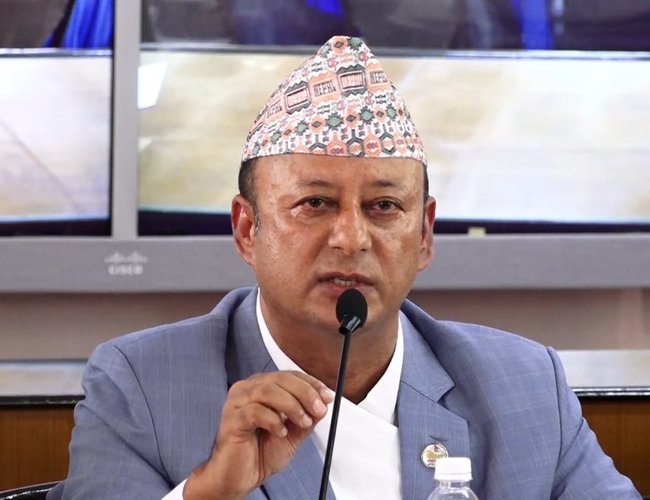
A statement from the Embassy of India indicates that India's Designated Authority for International Trade has sanctioned an additional 251 MW of electricity from 12 hydropower projects in Nepal. This marks the inaugural occasion on which Nepal will export electricity to Bihar under a medium-term power purchase agreement.
Consequently, the total approved capacity has risen from 690 MW (across 16 projects) to 941 MW (across 28 projects). Previously, an approval for 251 MW had been granted, as noted by Nehru. With electricity sales amounting to Rs. 16.93 billion, Nepal has transitioned into a net exporter of electricity, generating net revenue.
In October 2021, India first authorized the export of 39 MW of electricity from Nepal, and in less than three years, this figure has surged more than 24 times.
Nepal has commenced its energy export journey by participating in the day-ahead market on the Indian Energy Exchange. Following this initial step, India has granted access to the real-time market as well.
The Nepal Electricity Authority has also established a medium-term power purchase agreement with distribution companies in Haryana and Bihar. Furthermore, India has introduced a provision allowing Indian buyers to include hydropower imports from Nepal in their Hydropower Purchase Obligation (HPO), thereby incentivizing the procurement of power from Nepal.
The long-term energy agreement between the two nations facilitates the export of up to 10,000 megawatts of electricity from Nepal to India over the next decade. In this inaugural year of the agreement, nearly 1,000 megawatts have already been exported. Consequently, Nepal is poised to emerge as the foremost exporter of hydropower in the South Asian region.
An agreement to sell 40 megawatts of power to Bangladesh was intended to be finalized on 13 Shravan 2081; however, it was postponed due to recent political changes in Bangladesh.
Nepal has recently obtained authorization to export 251 megawatts of electricity to the Indian states of Bihar and Haryana, with a pricing rate of Rs.8.72 per unit.
The Central Electricity Authority, part of India's Ministry of Power, has granted the Nepal Electricity Authority permission to export an additional 125.89 MW to Haryana and 125 MW to Bihar, in accordance with a medium-term agreement.
The 125 MW allocated to Bihar will be sourced from ten hydropower projects, while the additional 125.89 MW for Haryana will come from two hydropower projects. Currently, the Nepal Electricity Authority exports 109 MW of electricity to Haryana.
Consequently, the total electricity to be supplied to Indian state distribution companies under the Mid Term Agreement will amount to 360 MW. The surplus electricity generated during the monsoon season, after meeting domestic consumption in Nepal, will be sold to Bihar and Haryana annually from June to October.
The tariff set for the sale of 109 megawatts to Haryana last year is 8.40 rupees per unit. Under this arrangement, the NEA is exempt from paying various taxes and charges, including transmission line fees, leakage costs, and trading margins to India.
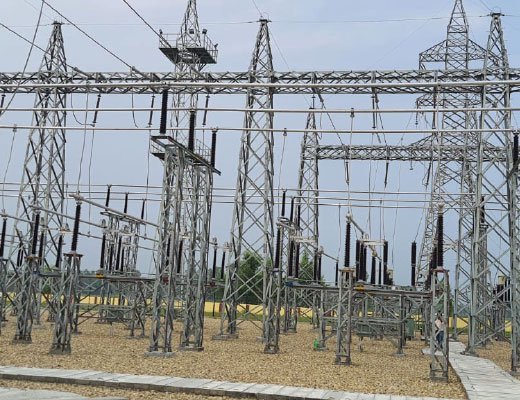
India's Energy Exchange Ltd (IEX) is providing electricity to Haryana at competitive prices through the real-time market, day-ahead market, and medium-term power contracts. Additionally, with India's consent, power sales to Bihar are set to commence.
According to the competitive market and medium-term agreement, 941 megawatts generated from 28 projects will be sold in the Indian market. Managing Director Ghising indicated that with the Indian approval, power exports to both Bihar and Haryana will begin shortly.
"Given that we can export 10 percent more than the approved capacity, we are now able to export over 1,000 megawatts. Furthermore, an additional 200 megawatts are awaiting export approval. We are optimistic about receiving this approval soon," stated MD Ghising.
"The increase in power generation will lead to a rise in exports, with a target set to export electricity valued at 25 billion rupees this year," stated Managing Director Ghising. The electricity will be transmitted through the Kataiya, Raxaul, and Ramnagar points, which are linked to Bihar via transmission lines.
The Nepal Electricity Authority (NEA) imported 1.89 billion units of electricity at a cost of Rs. 16.93 billion. During the same timeframe, however, 195 million units were exported to India, generating revenue of Rs. 17.6 billion. In the previous fiscal year, the revenue from electricity exports exceeded imports by 13 million rupees, marking a significant achievement for Nepal as it transitioned into a net exporter of electricity.
The NEA has indicated that electricity will be exported to Bihar through 132 kV transmission lines at Kataiya, Raxaul, and Ramnagar. The authority plans to sell the surplus power, which remains after domestic consumption, to Bihar and Haryana annually from June to October. Under the competitive market framework and medium-term agreements, 941 megawatts of electricity produced by 28 projects will be offered in the Indian market.
. Nepal joined the day-ahead market of the Indian Energy Exchange on May 1, 2021. Initially permitted to import electricity, Nepal transitioned to an exporter status on November 3, 2021. At present, the country exports approximately 700 megawatts of electricity daily across the intermediate, day-ahead, and real-time markets.
Additionally, Nepal has initiated efforts to sell power to Bangladesh, with a final agreement signed on July 13 to supply 40 megawatts of electricity. However, recent political changes in Bangladesh have introduced uncertainty regarding this arrangement.
Criticism of Export
Industrialists from eastern Nepal, particularly those who have declined to pay for electricity supplied through a dedicated feeder line, have voiced their discontent regarding the export of electricity to India, viewing it as detrimental to the Nepali industrial sector.
They contend that the Nepal Electricity Authority (NEA) has been implementing daily load-shedding of six hours in the industrial sector to facilitate electricity exports to India. Furthermore, industrialists from the Sunsari Industrial Corridor and Kathari Industrial Area have reported that they have had to reduce their production by one-third due to issues related to low yield and frequent power interruptions.
Pawan Kumar Sharda, the president of the Confederation of Nepalese Industries (CNI) in Koshi Province, has accused the Nepal Electricity Authority (NEA) of compelling Nepali citizens to endure load shedding while exporting electricity to India. Anupam Rathi, president of the Morang Industry and Trade Association, noted that despite the country's surplus electricity leading to exports, load shedding persists in older industries.
Rakesh Surana, president of the Morang Industrial Association, highlighted that the industries in Morang and Sunsari are incurring losses due to load shedding and power tripping issues. The fruit and plastic melting sectors, in particular, are facing significant challenges related to the loss of raw materials. In response, Saroj Sah, head of the NEA's Biratnagar branch, refuted these claims, asserting that the NEA is providing sufficient electricity in the region.
Sah explained that the overload issues arise from low power consumption by industries and mentioned that a recent power outage was caused by an unexpected fault in the power line, which the authority promptly repaired.
Roshan Khadka, the head of the Duhbi Grid at NEA, stated that the transmission line is operating at its full capacity, supplying adequate power to the industries. Occasionally, technical issues may arise with the transmission line; however, our teams address these problems promptly.
Contrary to the claims of industrialists, there is no occurrence of 5-6 hour load shedding. Regardless of personal opinions, Managing Director Ghising has successfully transformed Nepal into a net exporter of electricity since the last fiscal year, and the recent approval for an additional 251 MW for export to India will enhance the financial margins.

Keshab Poudel
Poudel is the editor of New Spotlight Magazine.
- KUL MAN GHISING: Bowing Down To The People
- Apr 13, 2025
- POLITICAL VIOLENCE: Culture of Impunity
- Apr 11, 2025
- PM OLI MEETS PM MODI: No Progress
- Apr 09, 2025
- PM OLI’S THAILAND VISIT: Flip Flop
- Apr 08, 2025
- FM Dr. Deuba’s India Visit: Mission Aborted
- Mar 26, 2025
